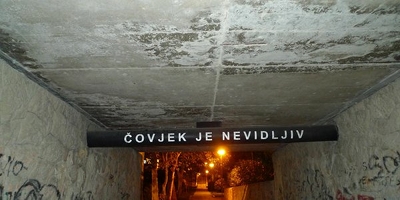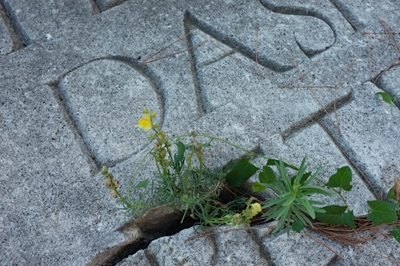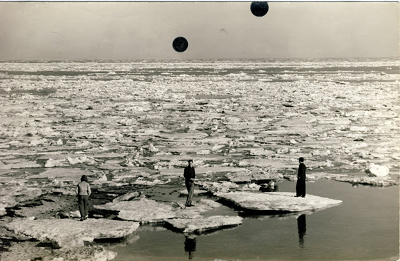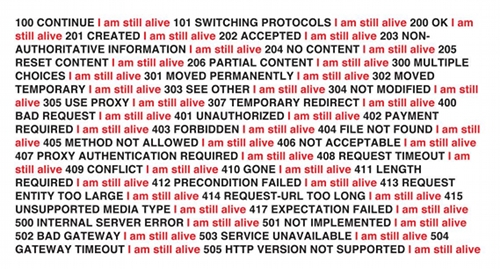Picture of Sound is a programme that was launched on Croatian
Radio Three in 2009. The intention behind it was that, in
addition to the critical coverage of contemporary art aired in other
programmes, we should provide the possibility for works of art to be
created in the programme and to be performed for the first time on the
air. We wanted, that is, to encourage a particular kind of audio work,
i.e., sound art, which is a branch of contemporary multimedia artistic
practices, the origins of which lie principally in visual and
conceptual art. At the same time, thanks to the capacities of the radio
medium, these works were able to be diffused much more widely than
would have been the case had they been performed in, for example, a
gallery presentation.
From the launch of Picture of Sound until the end of 2012, forty works
were produced and broadcast on Croatian Radio Three. Of these, the
first 18 (made from 2009 until the first half of 2010), after being
broadcast as part of regular programming, were set down for posterity
on a DVD called Picture of Sound released at the end of 2010. On this
present record, all the audio works of visual artists created from mid
2010 to the end of 2012 have been collected.
Evelina Turković
Editor, Picture of Sound
(Translated into English: Graham McMaster)
1) „A“ by Rino Efendic
(21’52”)


Sound engineer: Tomislav Unušić
First broadcast on April 4, 2010.
Split artist Rino Efendić, when he is photographing, his primary
activity it might be said, takes shots of abandoned urban nooks and
crannies, the beach in winter, during the sirocco, always something
abandoned, unprepossessing and insignificant. These are often
scenes in fragments: some grey piece of the waterfront with a crack in
the concrete, a torn rusty railing, the dark in which figures vanish.
Scenes of voids, entropy of all kinds, seldom populated with human
beings.
But the presence of the person observing through the lens can be felt
very well. The empathy of his gaze does not describe, is not interested
in the detail of the photographed, or any explanation of the situation
as is. The photographs are grouped into thematic units such as,
for example, Bačvice Beach, or A little night kite-flying, but do not
form any narrative flow. Efendić’s photos leave everything
up to the impression, the melancholic and intimist. As critic Ivana
Mance says: “Deprived of the usual capacity for analytical and
attentive viewing [the observer] is invited to a relation that does not
rest on rational objectification of the contents of the scenes shot: a
bit more than a sequence of unconnected fragments, for example, of the
night scenes of Split, can be seen not with the eye but only with the
organ of irrational and emotional acquiescence”.
The audio work of Rino Efendić entitled A was created by conjoining the
sounds of three religious rites and the repetitive sounds of military
formations. The text comes from the anti-psychiatric book Language of
Madness of David Cooper. The intermingling of these sounds
suggests a message about the yoking of the effects of religion, the
military and politics on the individual, who in front of all these
“formations” finds his only chance of survival in the
personal, poetic and emotional.
RINO EFENDIĆ:
A short chronology of my own audio creative work
At the beginning of course, along with photography, there was music.
Our generation was somehow oriented to it and it had a great influence
on at least my circle of friends. In particular the oblique strategies
of Brian Eno and Cage’s theories liberated me in particular and
showed me the way to many dimensions of the sound image and the
production of sound that was equal to the picture. Or the separate,
self-sufficient artefact. Intellectually, closest to me in fact
were the postulates of the protagonists of Fluxus and neo-Dada, and we
might say that on this network of previous meanings I build some
“sound picture” of mine. And so I start with little
experiments particularly interested in ambiental set-ups in which I
regularly use sources of sound. Juxtaposed or equal, but changing
their positions, I always put them into some kind of dialogue, or
rather polylogue.
In 1991 at the Adria Art Annale in Split I set up the work R.A.S.A.P.
[dissolution]: two slide projects joined with a fader show the same
image and fade it into the other with minimal and yet visible
differences, with sound accompaniment. The guitar, the
tones of which literally dissolved in the slow, drawn-out wailing, was
played by Luka Belan, and I edited them into segments of different
lengths. The sound thus followed the dissolution of the image
with all the connotations of the year, year of collapse and
disintegration.
In 1992, in a work entitled Without any tea in Split (Loggia Gallery),
[there were] again carousel slide projectors with a fader, this time
with 82 black and white photos in each, and with sound recorded in
everyday situations – on the market place, in the bus, on the
waterfront... The speech and the noise are in opposition to the images
of the little home tea ceremony. The war was coming close to the town,
and home was the only place of peace and quiet feelings.
In 1993 in the Galić Gallery was the work Contents. It was
prompted by the death of a friend in the southern theatre of war. On
one side, developed on mere-photographic paper, was a black and white
print of m body, and on the opposite side was a recording of me running
really in a frenzy through the city to the top of Marjan Hill. The
video was accompanied by the loud sound of breathing, of heart beats,
unconnected sentences in which, breathless, I ask about the contents,
about the essential in life.
1994, Jazz Café, very busy at that time: the installation Space
sound of space: in the first room some twenty small radios were chucked
in a heap; each of these little transistors told or crackled or sang or
spoke or whistled or howled its own story... In the second room
bird song could be heard from the loudspeakers, and in the third is a
television that was crackling, without an image, the sound of the
interference being very loud. At a symposium to accompany the
exhibition Check Point, Toni Horvatić projected his own text on himself
accompanied by the sound of my two-channel installation
EAIOU. On one channel I could be heard sighing and smacking my
lips over the letters of the alphabet with repetitions and variations,
and on the other channel the whole time rain was pelting down, the
various sounds of running water could be heard.
The installation AIUEO with alphabet sounds divided into two channels
was set up in the Gap Exhibition in Gripe Fort. Two adjacent
televisions were touching, on one was a video that showed a mouth and
on the other there were ears (all of them mine), and alongside them was
my bed.
At the exhibition Otok [Island] in Dubrovnik, in a darkened billiard
room I put on the work Onaia. On one line the monologue of a sex
telephone was recorded, and on the other I recorded my own voice
uttering the usual short words from a telephone conversation, such as
– what?... yeah! no! how’s that? you don’t say...
When these recordings were listened to at the same time in the room
they formed a dialogue full of quaint coincidences (He put it in my ...
How? and so on)
At the first film and video festival in Split I produced the work Uncle
with Milan Brkić. A van was put on the waterfront with a PA of
several thousand W that at unequal intervals shot out the single spoken
word STRIC or UNCLE. The voice was that of Milan Brkić. Chosen
according to a sound-meaningful and meaningless pattern both word and
installation excited numerous reactions. Since a PA system in a
public space is always reserved for ideological propaganda, this
broadcast single word excited attention and also estrangement (as
Comrade Shklovksy might have said).
Prompted by these weird sounds of ours Toni Horvatić and Co., organised
an event in 1997 called Alternation. I did a sound work – I spoke
very loudly a text of a very personal nature, but I did not let the
audience into the space of the Kinoteka. I was alone in the dark in
which I produced this sound. Sandi Vidulić in Slobodna Dalmacija
observed: “We have to take the artist at his word that he really
did the work, but does he thus do away with the possibility of
reviewing?”
In 1998 at Usta nad Labem the event Black and Blue. Again a
darkened room (we might say I use it often, so that visual attractions
shouldn’t detract from the sound). Two sources of sound
– audio English lessons were disturbed by frequency noises from
the other side to such an extent that they were unrecognisable. Then,
in the transitional Czech Republic, we recalled the words of
Stilinović’s work “An artist who doesn’t speak
English”...
I have always been particularly interested in radio as medium for
transmission and performance, and somehow I persuaded a team from
Split’s KL Radio to let me broadcast in the night the work
1700 seconds, a mix dedicated to the 1700th anniversary of Split, but
treated a little bit ironically through speeches, voices, texts from
the crime pages and similar sources. At the exhibition Sound Object, in
the Split Multimedia Culture Centre, my work was at the same time set
up in a gallery and broadcast on the radio, KL again of course.
In 2008 at the event Kvart [Quarter] with Milan Brkić in our
neighbourhood we put on the installation called Klima /
Air-Conditioning – a column of speakers of several thousand watts
at various intervals let out various sound miniatures which included
three religious invocations, allahu-akbar, alleluia and aum, which I
also use in the work A prepared for the broadcast Picture of Sound for
Croatian Radio 3.
And that, let’s say, would be about it.
2) „White Legend“ by Marko Tadic
(20’47”)

Sound engineer: Dubravko Robić
First broadcast on April 18, 2010
I’m interested by imaginary / fictional narrations and possible
changes to events in the past. This is nothing to do with
nostalgia, rather of using “that space” for various
interpretations of the not so distant past. These works, i.e.
fragments, tell the story of imaginary and Utopian spots, and these
fictional places show us the potential of the past and the future and
in this way demand our personal responsibility.
This is how Marko Tadić described his drawings exhibited in AŽ gallery
in the art studios at the area called Žitnjak in Zagreb. In these
drawings it was possible to recognise some examples of Zagreb
architecture of the 50s and 60s, or parts of them. But the
reality-effect of these identifiable motifs was cancelled out at the
first step. Cursorily drawn out on almost clean paper, these
buildings are shifted from their concrete setting to some undefined
space. The indeterminacy of their context, accompanied with on
the whole minimalist drawing, with some collage-like intervention, with
the imprint of an enigmatic date or a blot of colour, opened up the
space of these drawings for some new kind of reality: it opened up the
capacity to inscribe imaginatary personal constructions of the
contents. But here the author is not he who will determine the final
new reading or one generally valid narrative. Tadić has
managed to keep his drawing within the status of point of departure for
each individual viewer for his own fictional process of signification.
It is on this play between the real and the imaginary, collective and
personal, historical heritage and new contextualisation, fragmentation
and collage that Tadić’s other works are also based. In one cycle
for example he intervened on maps: inscribing his own signs on them he
formed a personal tale about a search for a Utopian place. Or before
that, Tadić would partially re-paint found kitschy souvenirs
– various wooden tablets covered with gaudy papers with
depictions of idyllic landscapes and the obligatory text
“Greetings from .... [this and that city]”, adding some
comment or confusing the places. Similarly, when he painted on
found old notebooks or ordinary pieces of board, these associative
semantic complexes would above all reveal the playful artist, who with
ease and wit linked high and popular culture, comic strip and graffiti
with motifs from history or the history of art.
The audio work that Marko Tadić prepared for the Picture of Sound,
Croatian Radio 3 has all those features: this is a fictional
construction of ready-made fragments (dramatised legends) that are
revealed to the careful listener as just such: the scratching of the
vinyl record or the audible cut in editing will reveal the historical
time and the source’s origin.
3) “I am still alive” by Darko Fritz
(21'30'')

Sound engineer: Danko Kuretić
First broadcast on April 25, 2010
Methods of archiving, transferring information from one medium to
another, their transformations brought about by the transmission, the
assimilation of inherent possibilities of means of communication into
individual experience, the pure naked signal, these are the themes that
since the very beginning, in the early 1990s, have marked the artistic
work of Darko Fritz. Multimedia are not here just an added
value. His fax messages, digital data turned into analogue, or
vice versa, or even a digital signal transmuted into ambiences or
biological substance, information that travels through time and space
and a phenomenal and tautological form: the very substance of his
works. Similarly, the process of generating such an artefact of his is
a relevant content of the work.
For example in the work End of the Message, a capacious five-year-long
project in which in seven phases he summed up his method. In the first
phase, in the Netherlands town of Enshedee in the framework of an
international project “From cabinet of marvels to
cyberspace” Fritz exhibited works from the holdings of the
Rijksmuseum. At the same time, endless fax messages arrived in
the museum, raising questions about the value of the originals
exhibited and concluding: Value on, No Value, End of Message. But
the events going on at the same time around the works were monitored
with security cameras put up in the museum, and portraits of visitors
who in order to look at the works got too close to the security camera
were exhibited, and sounds were recorded... These fragments were to be
once again exhibited in other places. Each individual work thus
generated itself, and its form and medium became the content. Or
as critic Radmila Iva Janković wrote, this was a “message about
how originals no longer have value, that reality is subject to
multiplications, is at once real and fake, transferable to an unlimited
number of possible places, bypasses are created between the virtual and
the real space, various realities move and interfuse without end, the
hard edges of the architectural space dissolve and create virtual
cleavages”. In the series of verbal works from the cycle
Internet Error Messages that was done in 2001 we are once again
concerned with the shifting from the virtual and computer to the real
environment, as well as its indirect contextualisation. Darko
Fritz produced this phrase of the computer vocabulary out of 2220 cacti
in the desert landscape of the volcanic island of Fuerteventura in
Spain.
The Darko Fritz work broadcast in Picture of Sound is from the same
cycle. In it he opens up a space between first person speech (him as
author and participant or listener), a hybrid space between private and
public telecommunications and their infrastructure. Fritz uses here
texts of reports of internet errors (HTML error reports) that inform
the computer user, a person, about a dialogue of two servers, that is
about problems of communication in two or more computers. The
numbers are error codes that are sufficient for the computers, and the
accompanying text is there for people to be explained briefly what
problem or protocol it is about. But the very title “I am still
alive” is a reference to a series of works of the same title by
On Kawara of the 1970s. One of these works, produced as five identical
telegraphic messages addressed in advance to Radoslav Putar, director
of the Zagreb Gallery of Contemporary Art of the time was exhibited in
Zagreb in 1973 at the Tendency 5 show. Just like Fritz now,
Kawara in this work used the actual information as its materialisation,
and as medium of telecommunication and in terms of content it was both
institutional criticism and first person speech of the artist. |

 PLAY EXCERPT
PLAY EXCERPT


